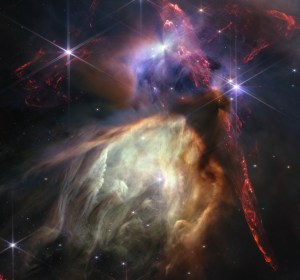Todd J. Barber, Cassini lead propulsion engineer
The odyssey will continue! I'm very happy to report in this column that NASA Headquarters has blessed our plans for an intensive two-year Cassini extended mission (XM). Even though we felt we were well placed for this mission extension, these things are far from certain until the final blessing is granted. I'm just thrilled that everyone seemed to recognize the continuing scientific potential of the Saturnian system. Even though Cassini has been probing the ringed planet for nearly four years, there is still so much yet to learn, and a focused and productive XM will help chip away at Saturn's eternal mysteries. I'm honored and privileged to be a small part of this team as it marches into its first mission extension.
A part of me was secretly hoping the maneuver and flyby schedule during XM might be a wee bit more relaxed than the packed prime mission, but such timid thinking is not in line with the boldness of our plans between the summers of 2008 and 2010. During this two-year period, we will actually be slightly busier than the prime mission, with 60 orbits of Saturn, 26 Titan flybys, 7 return visits to alluring Enceladus, and one close flyby each for Dione, Rhea, and Helene. The scientific bounty at the sixth planet demands nothing less. On a personal note, I look at this as good news for "Insider's Cassini" as well. My intention is to continue this column through the engineering challenges and scientific thrills of XM. Given the schedule of scientific targets, I can't imagine ever being at a loss for inspiration!
Speaking of engineering challenges and scientific thrills, since my last column, Cassini has been busier than ever as its four-year prime mission winds down. Around the daring Enceladus flyby (E3), we were kept busy cycling the main-engine cover to protect propulsion's main engines against dust hazards, executing Orbit Trim Maneuvers (OTMs), and even blogging about the E3 flyby! For a technological dinosaur like me, participating in a blog was a bit nerve-wracking, but I ended up having a wonderful time, along with my fellow bloggers. I'll be dragged into the 21st century yet! Thanks to the blogging experience, in fact, I felt more vested in this flyby than for any other encounter of the Cassini mission. In between a myriad of work duties, many of us on the flight team managed to steal away to a working lunch and lecture about the history of Saturn's rings. The post-E3 press conference was fantastic, too, a celebration of Cassini's successful bid to "smell and taste" the plume material gushing from Enceldaus. I don't know if I was more excited about the higher-than-expected temperatures (thus increasing the likelihood for subsurface liquid water), the discovery of organic molecules, or the fact the chemistry of the plumes is closer to cometary chemistry than anticipated. Talk about a scientific hat trick! All in a day's work on the most complex interplanetary spacecraft ever built, I guess.






























